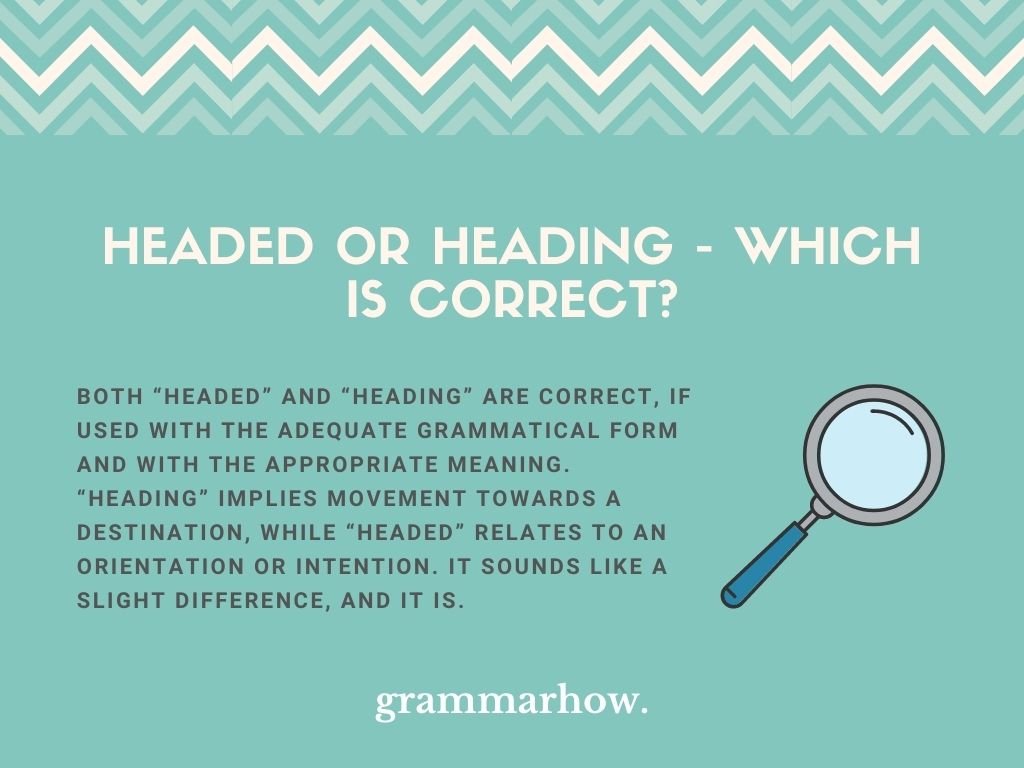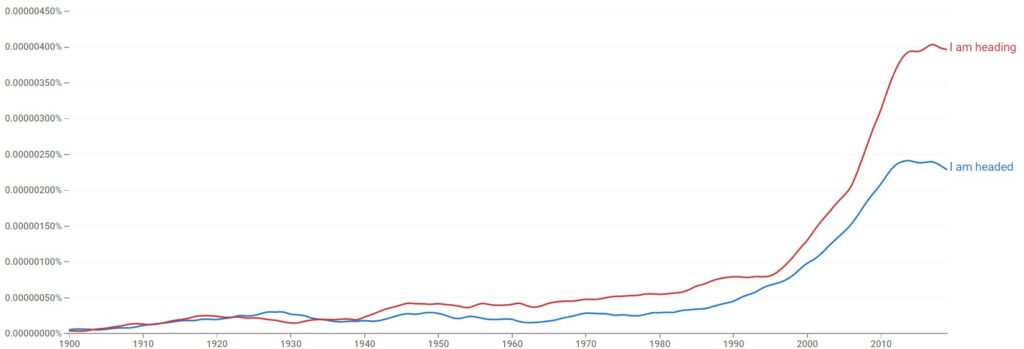When in transit, should we say we’re “Headed” or “Heading” towards a location?
Sometimes, small changes shift the message a sentence conveys, even if just slightly. Let’s take a look at these two words, to figure out which we should use, to communicate with others as clearly as possible.
Headed or Heading – Which Is Correct?
Both “Headed” and “Heading” are correct, if used with the adequate grammatical form and with the appropriate meaning. “Heading” implies movement towards a destination, while “Headed” relates to an orientation or intention. It sounds like a slight difference, and it is.

Take a look at the examples below:
- After a long night of partying, Sarah was headed home.
- After a long night of partying, Sarah was heading home.
- The train left the station and was heading west.
- The train on the platform was headed to New York.
The first set of examples contains two versions of the same sentence, with just one simple variation: one sentence used “Headed” and the other “Heading”.
The sentence with “Headed” indicates an intention: Sarah had partied a lot and her next stop would be home. However, she wasn’t necessarily on her way already.
The sentence with “Heading” indicates that Sarah was indeed already on her way. There’s movement involved, and not only an intention.
The second set of sentences used more resources to make the difference more clear. Still, it has the same idea behind it: one train is already in movement, “Heading” west, while the other one is set to go to New York, “Headed” in that direction.
Headed
To be “Headed” somewhere indicates an orientation toward a particular destination. It reflects an intention to get somewhere, but it doesn’t mean that action has been taken already in order to get going.
Take a look at “Headed” in use in some sentences, to understand better how it works:
- Frank was headed to the emergency room.
- I’m headed home as soon as I finish my shift.
- Danny is headed out of the office after a long day of work.
- Kyle is finally headed home, after staying in the library all day.
- Where are we headed now?
“Headed” may be used to indicate a movement that happened in the past, such as in sentence 1, when Franks was “Headed” to the ER. But it can also indicate a plan for the future, like in sentence 2, where the person says they’re “Headed” home when the shift ends.
However, “Headed” doesn’t reflect movement. In other words, it doesn’t imply that the subject is going to wherever they’re “Headed” to at this moment.
Heading
To indicate any movement that is ongoing, we should use “Heading”. When a sentence includes “Heading”, we understand that movement is involved. Even when it’s used in the past tense, “Heading” is more than mere intention or desire.
“Heading” always relates to the idea of actually moving towards a place or direction. For that reason, it’s very hard to use “Heading” in the future tense – because in that case it’d indicate an intention, and that’s not what “Heading” is for.
Let’s see some examples of “Heading” in real sentences:
- Harry was out all day running errands, but now he’s heading home.
- I’m heading out now, thank you so much for dinner.
- Now that the movie is over, are we heading out?
- Marisol was heading to Spain for a much needed vacation.
- Darren told Vanessa he was heading home because he didn’t feel comfortable at the party.
Which Is Used the Most?
It’s hard to guess which of those two words is used more often. Considering they have a similar meaning, with only a few differences in application, it could honestly be any of them. Take a look at the graph from Google Ngram Viewer below, to find out which is used more.

“I am Heading” appears more often than “I am Headed”. And although the usage for those two words have oscillated quite a bit over the years, it always trended in such a way that “I am Heading” appears more frequently.
Final Thoughts
“Headed” and “Heading” are words that indicate going from one place to another, from one point to the other. “Headed” indicates intention or plans to go, but sometimes isn’t related to actual movement. “Heading”, however, implies movement and action towards the goal of getting to a certain place.
You may also like: Heading To Or Heading For? Difference Revealed (+14 Examples)

Martin holds a Master’s degree in Finance and International Business. He has six years of experience in professional communication with clients, executives, and colleagues. Furthermore, he has teaching experience from Aarhus University. Martin has been featured as an expert in communication and teaching on Forbes and Shopify. Read more about Martin here.

